One of the best things about camping is eating, and you’re likely not the only one in the backcountry who appreciates fine camp cuisine. Any bear, racoon, coyote, skunk, possum, or other opportunistic scavenger close enough to pick up the scent might stop by for dinner or a late night snack.
And these moochers aren’t picky. They’ll settle for food, trash, even toiletries like toothpaste and soap. That’s why it’s so important to take precautions to protect your foodstuff — and yourself — from bears and other wildlife that might come calling.
Are bears a major safety concern in the backcountry? Only if you encounter them, and that depends on where you’re spending your time. As explained in our previous post, “Gauging Your Safety in the Wilderness: What’s the Most Dangerous Animal?” you’re most likely to run into bears in remote forested or alpine areas. But you should always be careful whenever you’re in an area bears are known to roam.
Explore Your Food Storage Options
Your type of activity and style of travel will determine the food storage system you choose. Here are several simple food storage options to consider:
- If you’re car-camping, simply return your food and cookware to your vehicle after a meal.
- If you’re at a campsite that provides food storage boxes, you can use one of those.
- If you’re on a paddling trip without any risk of encountering a bear, simply secure your food in a cooler with a good lid.
However, if you’re hiking in the backcountry, you’ll need to take some additional precautions. That means using specific food storage methods such as bear hangs or bear cans, and being intentional about how you arrange your campsite.
Using a Bear Hang
Bear hangs dangle your food bag out of reach of animals. They’re lightweight and require minimal equipment:
- Bear bag or stuff sacks to contain your food and scented items, such as toiletries
- 100 feet of rope or parachute cord
- One or two carabiners
- A weighted object, such as a stuff bag with a rock in it (a heavy carabiner can do the trick)
You can choose from several different bear hang techniques. Here’s the basic One-Tree Method:
- Select a tree with a sturdy branch at least 15 feet off the ground and extending at least five feet out from the trunk.
- Tie one end of your rope to a weighted object, such as a carabiner or a stuff bag with a rock in it, and toss it over the branch.
- Clip the carabiner onto your food bags and pull on the opposite end of the rope until the bags are at least 12 feet off the ground and five feet from the trunk of the tree.
- Tie the end of the rope around the trunk of a nearby tree.
Safety precaution: Be sure nobody is standing in the direction the rope is being thrown or under the area the bag is hung.
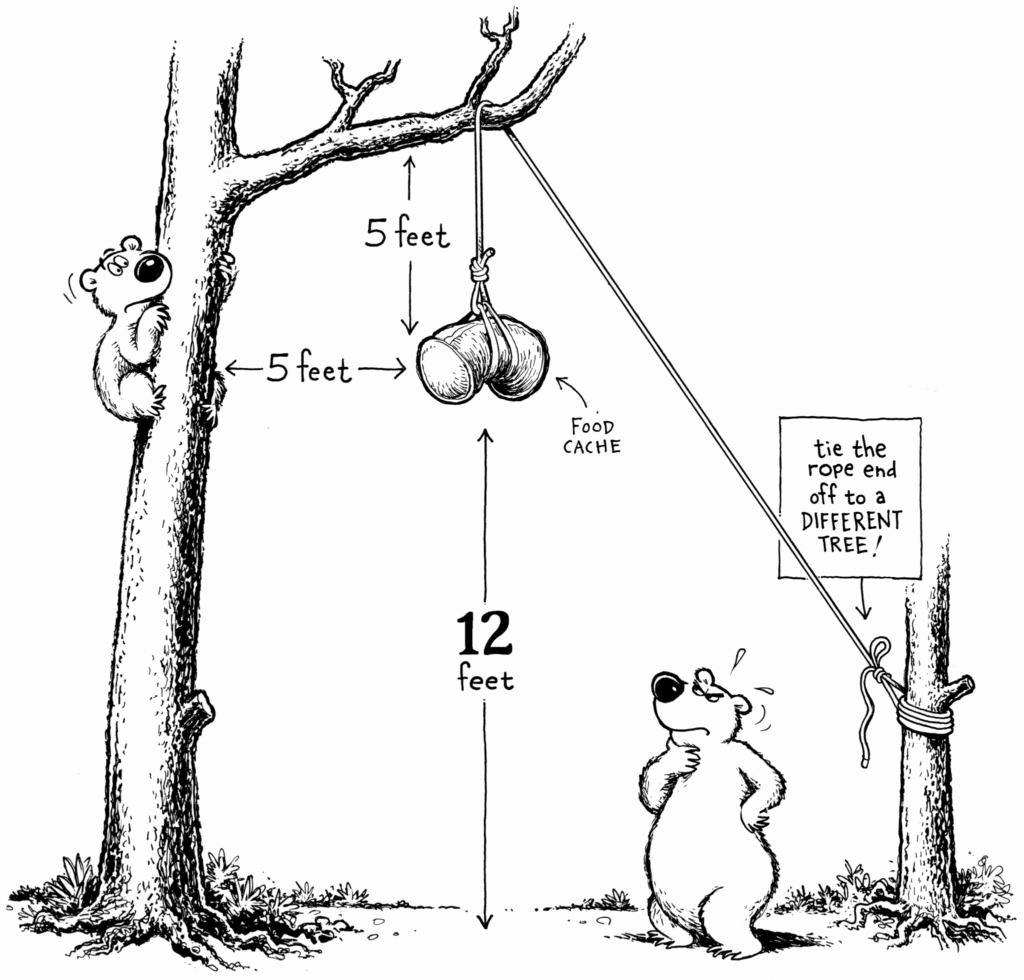
This basic method works well in most areas; however, depending on the types of trees and types of wildlife in the area where you’re traveling, knowing a couple other methods can be helpful.
Another method, the Two-Tree Method, is more difficult and requires more rope, but it enables you to hang a bear bag securely when you can’t find a tree with a suitable overhanging branch. Here’s what you’ll need:
- Bear bag or stuff sacks
- Two sturdy trees at least 15 feet apart
- 100 feet of rope or parachute cord
- One carabiner or a sturdy clip
Take the following steps:
- Find two sturdy trees about 15–20 feet apart. You want to suspend your food at least 12 feet off the ground and at least six feet from either tree trunk.
- Tie one end of your rope to a weighted object, such as a carabiner or a stuff bag with a rock in it, and throw it over a sturdy branch about 15–20 feet high on the first tree.
- Lower the weighted object to the ground and pull an additional 40 feet of rope.
- Tie a loop in the section of rope that will be extending between the two trees so it will be nearly centered between the two trees when you hang your bag. Secure the loop to the first tree, so it doesn’t get raised out of reach when you perform the next step.
- Throw the weighted object over a sturdy branch about 15–20 feet high on the second tree.
- Lower the weighted object to the ground, untie it from the rope, and secure the end of the rope to the tree or a nearby tree.
- Clip your carabiner to the loop you tied in the midpoint of the rope and clip it to your food bag.
- Tighten the rope by pulling on opposite ends of the rope, hoisting your food bag off the ground and centering it between the two trees, and then tie down the two ends to secure them. Having two people helps. If you’re alone, you’ll have to secure one end of the rope while pulling on the other.
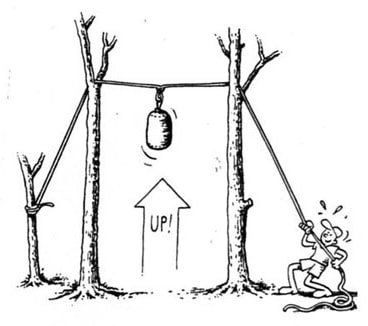
The Pacific Crest Trail (PCT) bear hang method is simple, provides convenient access to your food, and serves as a more secure way to suspend your food and scented items. Here’s what you need:
- Bear bag or stuff sacks
- 60 feet of rope or parachute cord
- One carabiner
- A sturdy stick
Take the following steps:
- Select a tree with a sturdy branch at least 15 feet off the ground and extending at least five feet out from the trunk.
- Tie one end of your rope to a heavy object, such as a carabiner or a stuff bag with a rock in it and throw it over the branch.
- Attach a carabiner to the end of the rope hanging closest to you and then clip your food bag to the carabiner.
- Thread the other end of the rope through the carabiner and pull on the rope to raise your food bag until it’s right up against the branch.
- While holding the rope tight, reach up and tie the stick to the rope, so the stick is perpendicular to the rope.
- Slowly release the rope so that the stick rises up to the carabiner and stops the bag from lowering any further. Your bag should now be about 12 feet off the ground.
The stick acts as a toggle. You can now pull on the rope to lower the stick and remove it so that you can lower the bag to the ground and then reattach the stick to quickly and easily suspend the bag again.
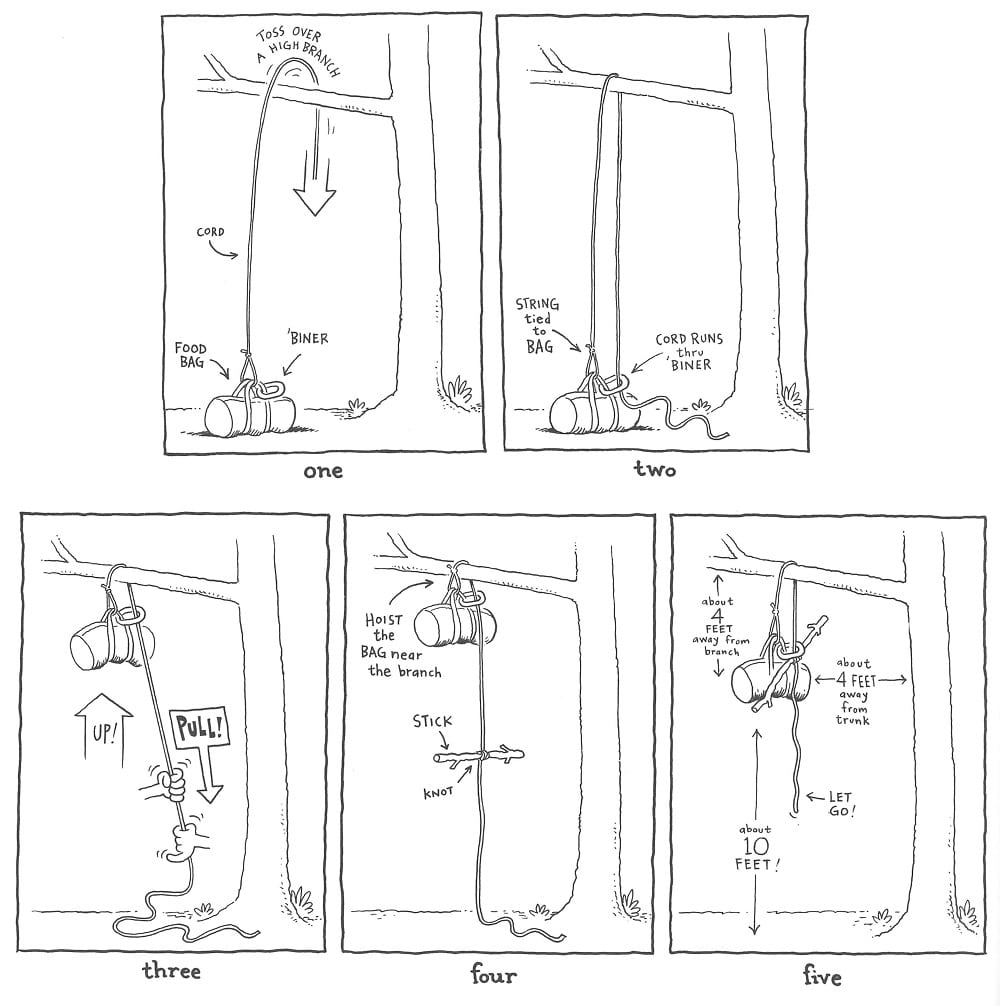
Tip: Practice several bear hang techniques before your expedition.
Using a Bear Can
There are many bear cans (that’s bear cans, not beer cans) on the market, but one of the few universally recommended by land management agencies is the Backpacker’s Cache shown below. These cans are smooth and rounded, making them hard for bears to grip, and they have locking lids to prevent wild animals from opening them.
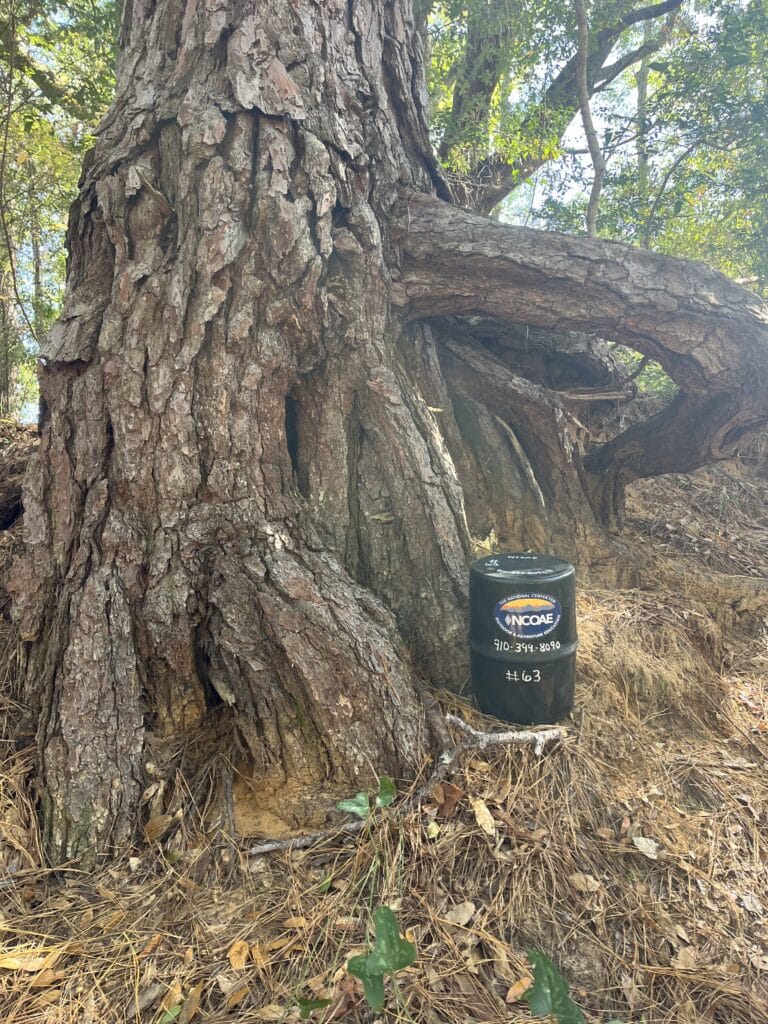
Bear cans offer ease of use and are designed to fit easily into a backpacking pack; however, they are heavier than bear bags, so if weight is a consideration, and you’re in an area with a lot of trees, hanging a bear bag may be the better option.
Using Both Bear Cans and Bear Hangs
Another option, especially if you’re traveling with a large group for a multi-day trip, may be to use both bear cans and bear hangs. Consider packing the bulk of the group food into bear cans, but reserving a few bear bags to store your scented items and any overflow food that doesn’t fit easily into the cans. This solution allows you to take advantage of the ease of storage that bear cans provide, while lightening the load for some participants on your trip.
Arranging Your Campsite to Secure Your Food and Safety
Regardless of the food storage solution you choose, it is also important to follow low-impact camping guidelines and set up your camp in a triangle layout whenever possible. This technique minimizes the risk of wildlife encounters in camp.
Set up your camp kitchen, sleeping area, and food storage areas a minimum of 200 feet apart (70–80 steps), to prevent animals from searching for food near where you’re sleeping. If you’re in an area with high bear activity, increase this distance to at least 300 feet (100 yards). If there isn’t enough room for a triangle, space the areas out the best you can.
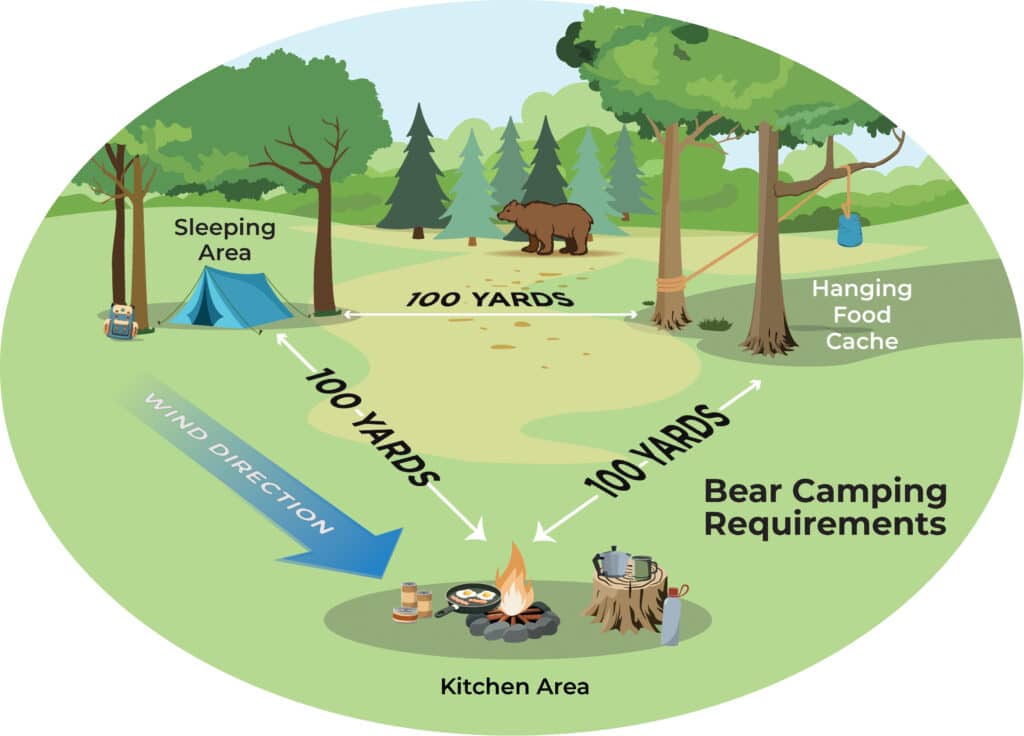
Remember, just because you never encountered a bear in the wild doesn’t mean you never will. If you’re wondering what an actual bear encounter is like, check out our three-part series “The Three Bears: Tales of Terror and Trepidation”: Part 1 “The Shock,” Part 2, “Some Confrontations Can Be Humorous,” and Part 3, “Decision Time for the Trailbike Rider.”
Don’t let concerns about bears, raccoons, and other critters crashing your campsite scare you off from your next wilderness adventure, just be sure to follow the simple precautions and techniques presented in this post.
TALK TO US
Have any further questions about our courses, what you’ll learn, or what else to expect? Contact us, we’re here to help!
Leave a comment